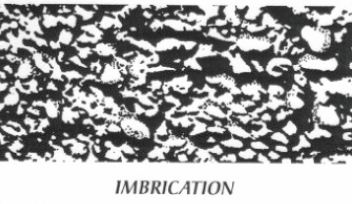نمایش نتیجه 451 تا 460 از 1065 نتیجه یافت شده برای over:
بازیابی هیدروکربورها
n: a process of petroleum refining in which straight-run, cracked, or mixed naphthas are passed over a solid catalyst at elevated temperatures and moderate pressures in the presence of added hydrogen or hydrogen-containing gases. The main chemical reactions are dehydrogenation and aromatization of the nonaromatic constituents of the naphtha to form either high-octane motor fuel or highgrade aviation gasoline high in aromatic hydrocarbons such as toluene and xylenes. Ninety percent of die sulphur contained in the naphtha is removed.
variable rate of decline over the life of the well.
n: reduced body temperature caused by overexposure to chilling temperatures.
.. n: a transformer loss caused by magnetism retained in the core of the transformer each time the alternating current is reversed. Some energy must be used to overcome the residual magnetism each time the current reverses.
n: in sedimentary rocks, the arrangement of pebbles in a flat, overlapping pattern like bricks in a wall. Often shown by stream gravel deposits.
abbr: Intergovernmental Maritime Consultative Organisation.
any of various methods, chiefly reservoir drive mechanisms and enhanced recover techniques, designed to improve the flow of hydrocarbons from the reservoir to the wellbore or to recover more oil after the primary and secondary methods (water and gas flood
n: the introduction of artificial drive and displacement mechanisms into a reservoir to produce a portion of the oil unrecoverable by primary recovery methods. See enhanced oil recovery.
n: a method of improved recovery in which heat is generated within the reservoir by injecting air and burning a portion of the oil in place. The heat of initial combustion cracks the crude hydrocarbons, vaporises the lighter hydrocarbons, and deposits the heavier hydrocarbons as coke. As the fire moves from the injection well in the direction of producing wells, it bums the deposited coke, releases hot combustion gases, and converts connate water into steam. The vaporised hydrocarbons and the steam move ahead of the combustion zone, condensing into liquids as they cool and moving oil by miscible displacement and hot waterflooding. Combustion gases provide additional gas drive. Heat lowers the viscosity of the oil, causing it to flow more freely. This method is used to recover heavy, viscous oil. Also called fire flooding.
احتراق درجا





